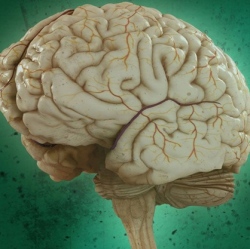
According to a recent study published in the journal PLOS Biology, the brain “sweeps” clean dead neurons for it to function properly, but when it comes to neurodegenerative diseases, this cleaning process is impaired. There are mechanisms that keep the brain clean during neurodegenerative diseases.
Typically, when neurons die, their debris needs to be quickly swept away for the surrounding brain tissue to continue functioning properly. There needs to be a balance between highly specialized cells, microglia, that respond by disposing of neurons that express "eat me" signals, according to Dr. Michael Harrington, Director of Neurosciences at Huntington Medical Research Institutes in Pasadena, Calif.
Now, for the first time, researchers have sought to observe the process of neuronal death and microglial phagocytosis, removing dead and dying neurons as well as synapses, and the processes of live neurons, in the diseased brain. It is known that during epilepsy-related seizures neurons die. However, despite what happens in the healthy brain, during epilepsy, microglia behave abnormally as they become “blind” and unable to find the lingering dead neurons and destroy them.
This means the dead neurons accumulate, spreading the damage to neighboring neurons, and triggering an inflammatory response that can worsen the brain injury. When dead neurons aren’t completely drained from the brain, the brain’s process of attempting to clear the damaged tissue could increase inflammation and cause secondary damage.
The researchers believe phagocytosis, the elimination of dead neurons, is at the core of the regenerative response of the damaged tissue because it prevents the spillover of toxic intracellular contents, liquid found inside cells, and is actively anti-inflammatory. The microglia in the brain, which rapidly engulfs and degrades cells that are dying, could potentially be key to brain regeneration because of their ability to get rid of dead cells and prevent further damage. This could lead to new treatments to alleviate the effects of not just epilepsy, but Alzheimer’s disease, Parkinson’s disease, and stroke.
Currently, the researchers are developing drugs hoping to boost the brain’s cleaning process and help in the treatment of epilepsy. In other words, if researchers could figure out how to “unblind”’ the microglia, this could help halt neuronal deterioration in brain diseases.
In neurodegenerative diseases such as Alzheimer’s or Parkinson’s, nerve cells can be damaged in many ways. For example, Parkinson’s disease attacks neurons that transfer messages using dopamine, which is also involved in controlling movements. This causes the tremors seen in patients with the condition. In Alzheimer’s disease, the neurons associated with learning and memory are lost. However, in both conditions, neurons do not die immediately, they first become dysfunctional.
Last month, a study found that inhibiting Mer and Axl, the two receptors that clear out dead or dying cells, could be beneficial to people with brain disease. The researchers found Mer and Axl may actually target living, but functionally compromised, cells. Although this isn’t necessarily a bad thing in the healthy brain, the destruction of these living cells may backfire in people with brain disease.
These findings warrant further research into alternative therapies that would preserve healthy, living neurons and slow the progression of neurodegenerative diseases.
"This is a very active research area," Harrington agreed. Meanwhile, some steps we can take to help drain our brain include good sleep and good exercise, which clears toxins in the brain. Also, being vigilant about the treatable risk factors for dementia, including hypertension, diabetes, and hyperlipidemia can help maintain healthy brain function.
